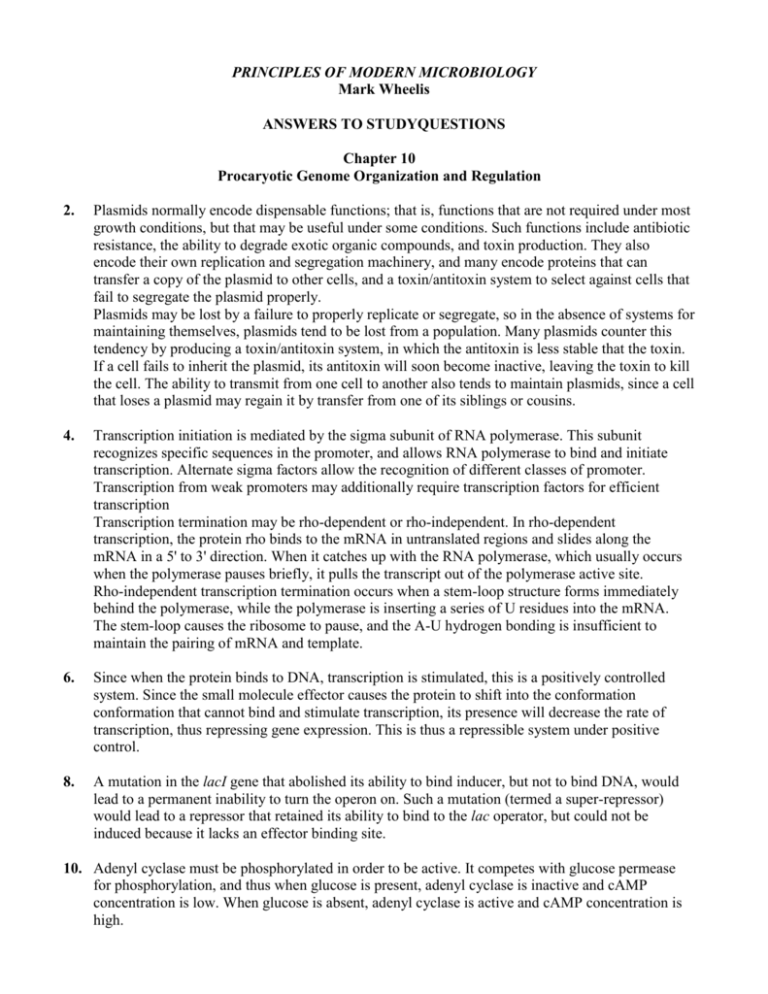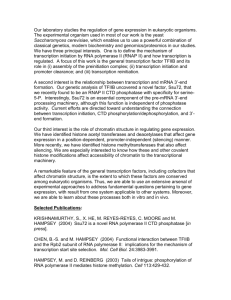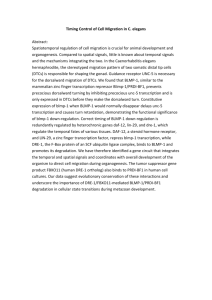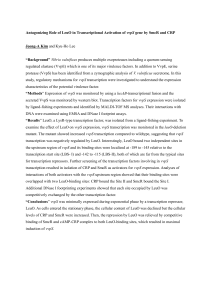Chapter 10 Answers to Even Numbered Study Questions
advertisement

PRINCIPLES OF MODERN MICROBIOLOGY Mark Wheelis ANSWERS TO STUDYQUESTIONS Chapter 10 Procaryotic Genome Organization and Regulation 2. Plasmids normally encode dispensable functions; that is, functions that are not required under most growth conditions, but that may be useful under some conditions. Such functions include antibiotic resistance, the ability to degrade exotic organic compounds, and toxin production. They also encode their own replication and segregation machinery, and many encode proteins that can transfer a copy of the plasmid to other cells, and a toxin/antitoxin system to select against cells that fail to segregate the plasmid properly. Plasmids may be lost by a failure to properly replicate or segregate, so in the absence of systems for maintaining themselves, plasmids tend to be lost from a population. Many plasmids counter this tendency by producing a toxin/antitoxin system, in which the antitoxin is less stable that the toxin. If a cell fails to inherit the plasmid, its antitoxin will soon become inactive, leaving the toxin to kill the cell. The ability to transmit from one cell to another also tends to maintain plasmids, since a cell that loses a plasmid may regain it by transfer from one of its siblings or cousins. 4. Transcription initiation is mediated by the sigma subunit of RNA polymerase. This subunit recognizes specific sequences in the promoter, and allows RNA polymerase to bind and initiate transcription. Alternate sigma factors allow the recognition of different classes of promoter. Transcription from weak promoters may additionally require transcription factors for efficient transcription Transcription termination may be rho-dependent or rho-independent. In rho-dependent transcription, the protein rho binds to the mRNA in untranslated regions and slides along the mRNA in a 5' to 3' direction. When it catches up with the RNA polymerase, which usually occurs when the polymerase pauses briefly, it pulls the transcript out of the polymerase active site. Rho-independent transcription termination occurs when a stem-loop structure forms immediately behind the polymerase, while the polymerase is inserting a series of U residues into the mRNA. The stem-loop causes the ribosome to pause, and the A-U hydrogen bonding is insufficient to maintain the pairing of mRNA and template. 6. Since when the protein binds to DNA, transcription is stimulated, this is a positively controlled system. Since the small molecule effector causes the protein to shift into the conformation conformation that cannot bind and stimulate transcription, its presence will decrease the rate of transcription, thus repressing gene expression. This is thus a repressible system under positive control. 8. A mutation in the lacI gene that abolished its ability to bind inducer, but not to bind DNA, would lead to a permanent inability to turn the operon on. Such a mutation (termed a super-repressor) would lead to a repressor that retained its ability to bind to the lac operator, but could not be induced because it lacks an effector binding site. 10. Adenyl cyclase must be phosphorylated in order to be active. It competes with glucose permease for phosphorylation, and thus when glucose is present, adenyl cyclase is inactive and cAMP concentration is low. When glucose is absent, adenyl cyclase is active and cAMP concentration is high. When cAMP concentration is high, it activates a specific transcription factor (CRP) that can bind to specific sites adjacent to the weak promoters that control enzymes for the degradation of alternate carbon sources. Thus in the absence of glucose, these enzymes are poised to be induced to high levels. In the presence of glucose, CRP is inactive and these enzymes cannot be induced to high levels even if their specific inducer is present.






